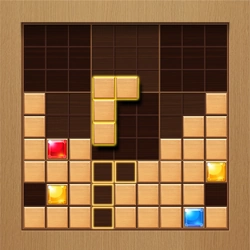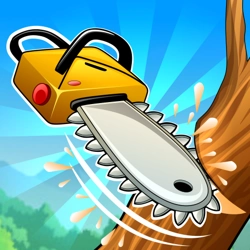Description:
A free bubble game such as Cozy Merge offers an astounding gaming experience, infused with the fun and excitement that free bubble games are known for. As an amazing merge numbers game, Cozy Merge involves a fascinating combination of calculation, strategy, and enjoyment wrapped up all in one bubble-popping package.In the world of free bubble games, Cozy Merge holds a unique place with its distinctive gameplay. The game's primary objective is to merge numbers and aim for a combined score of one million. This is done by simply placing identical tiles adjacent to each other on the board. Although it may sound straightforward, the thrill of Cozy Merge, like many a free bubble game, lies within its clever simplicity.
One of the appealing features this free bubble game boasts of is the availability of potent power-ups. Upon confronting a challenging scenario where you find yourself trapped, these power-ups come into action. You can undo your previous move, mix up all the tiles located within your playing field, or even duplicate any tile by a factor of two.
The beauty of this free bubble game resides in its dual nature. On one side, Cozy Merge is incredibly easy to pick up and learn. The rules are simple and the controls are intuitive, making it a great starting point for anyone who is new to the realm of free bubble games. On the other side, even though it is easy to get the hang of, mastering it presents an intriguing challenge.
Cozy Merge, this addictive free bubble game, has endless gameplay and a relaxing environment that keeps players hooked for hours on end. The challenge of merging numbers, the anticipation of the next move, the strategy involved in power-ups, and the race to reach one million keeps the game fresh and exciting.
Like any notable free bubble game, Cozy Merge engages your mind and improves your strategic thinking while promoting a feeling of relaxation and amusement. If you love bubble games and are on the lookout for a unique, engaging, and free bubble game, let the merging adventure start with Cozy Merge. It's fun, it's challenging, and most importantly, it's a free bubble game that truly captures the essence of fun and interactive gaming.
Instructions:
You have a field on which you need to place tiles with numbers. Place tiles with the same number next to each other to get one tile with the final number multiplied by two. As a result, you need to reach one million. If you suddenly get stuck, then use powerful boosters: undo last move, shuffle all the tiles on the field and multiplying any tile by two.What are Browser Games
A browser game or a "flash game" is a video game that is played via the internet using a web browser. They are mostly free-to-play and can be single-player or multiplayer.
Some browser games are also available as mobile apps, PC games, or on consoles. For users, the advantage of the browser version is not having to install the game; the browser automatically downloads the necessary content from the game's website. However, the browser version may have fewer features or inferior graphics compared to the others, which are usually native apps.
The front end of a browser game is what runs in the user's browser. It is implemented with the standard web technologies of HTML, CSS, JavaScript, and WebAssembly. In addition, WebGL enables more sophisticated graphics. On the back end, numerous server technologies can be used.
In the past, many games were created with Adobe Flash, but they can no longer be played in the major browsers, such as Google Chrome, Safari, and Firefox due to Adobe Flash being shut down on December 31, 2020. Thousands of these games have been preserved by the Flashpoint project.
When the Internet first became widely available and initial web browsers with basic HTML support were released, the earliest browser games were similar to text-based Multi-User Dungeons (MUDs), minimizing interactions to what implemented through simple browser controls but supporting online interactions with other players through a basic client–server model.[6] One of the first known examples of a browser game was Earth 2025, first released in 1995. It featured only text but allowed players to interact and form alliances with other players of the game.



